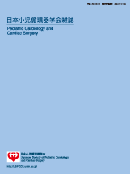Volume 29, Issue 2
Displaying 1-9 of 9 articles from this issue
- |<
- <
- 1
- >
- >|
Editorial
-
2013 Volume 29 Issue 2 Pages 51-52
Published: 2013
Released on J-STAGE: April 11, 2013
Download PDF (577K)
Features
-
2013 Volume 29 Issue 2 Pages 53
Published: 2013
Released on J-STAGE: April 11, 2013
Download PDF (521K) -
2013 Volume 29 Issue 2 Pages 54-56
Published: 2013
Released on J-STAGE: April 11, 2013
Download PDF (4567K) -
2013 Volume 29 Issue 2 Pages 57-67
Published: 2013
Released on J-STAGE: April 11, 2013
Download PDF (11506K) -
2013 Volume 29 Issue 2 Pages 68-74
Published: 2013
Released on J-STAGE: April 11, 2013
Download PDF (4332K) -
2013 Volume 29 Issue 2 Pages 75-87
Published: 2013
Released on J-STAGE: April 11, 2013
Download PDF (7125K) -
2013 Volume 29 Issue 2 Pages 88-91
Published: 2013
Released on J-STAGE: April 11, 2013
Download PDF (2005K)
Original
-
2013 Volume 29 Issue 2 Pages 92-97
Published: 2013
Released on J-STAGE: April 11, 2013
Download PDF (910K)
Editorial Comment
-
2013 Volume 29 Issue 2 Pages 98-99
Published: 2013
Released on J-STAGE: April 11, 2013
Download PDF (588K)
- |<
- <
- 1
- >
- >|
